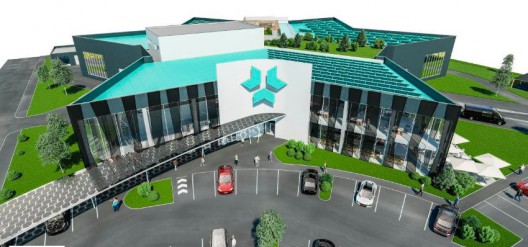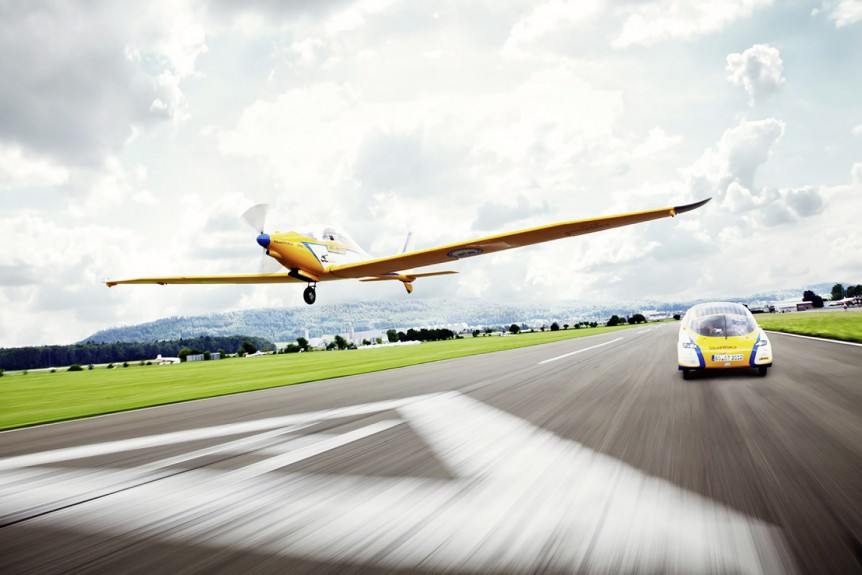We keep hoping for the long-awaited 10X, or even 5X battery that would make electric aviation “pop” in a significant way. The Kreisel brothers in Austria are not developing new batteries or chemistries, but through careful design and manufacturing techniques, manage to reduce weight in their battery packages – one example being the two “ultra-lightweight battery units” they supply for PC-Aero’s Elektra One. With a total weight of “just 64 kilograms,” (140.8 pounds), the packs “provide [an] efficient and reliable energy supply for a range of 400 kilometers (248 miles)… a flight duration of three hours [and a] speed of 160 kilometers per hour (99.2 mph).”
Each pack stores 5.8 kilowatt-hours of electrical energy, or 5.52 kw-hr./kg. That’s roughly an eight-percent savings over the Teslas’s battery, if all else is equal. It might be a harder number to achieve in a small package, there probably being a certain irreducible minimum of things that weigh down the small package disproportionately more than a larger battery system.
Tesla’s 90 kilowatt battery, according to Battery University, weighs 1,200 (1,188 multiplying 540 time 2.2) pounds (540 kilograms), storing 6 kilowatt-hours per kilogram. Other electric vehicles fare less well. A Chevy Volt, for instance, has a 16 kilowatt-hour battery that weighs 181 kilograms (398.2 pounds), weighing 11.3 kilograms per kilowatt. Kreisel’s does well with existing cells.

Kreisel’s planned expansion, showing photovoltaic roofs that will provide energy to run the factory
Kreisel Electric is expanding its facilities – not quite a gigafactory, but a high-level kilofactory capable of producing 800,000 kWh per year. According to the company, the 6,276 square meter (67,554 square feet) facility will include a fully automated production line. The new building, divided into three equal-sized parts, will also be used to craft prototypes and small batch production runs; and contain software, engineering development and business offices.
Similar to Pipistrel in Slovenia, the factory roof will be covered by a photovoltaic system with a 200 kW peak output, the energy stored in 1,000 kWh Kreisel batteries for powering the building and production equipment. Heat recovered from production machinery helps heat the facility.
Greater than Eight Percent
Dei Welt reports that the three brothers, Johann Centrifugal (also translated as “Gyro”), Jr.; Markus Kreisel, and Phillip Centrifugal, started with an early electric Renault and essentially began “hacking” its systems to improve performance. In a short time, they have graduated to the point where their claims seem almost boastful, but have auto executives coming to their enterprise to check them out.
The Brothers have electrified a Porsche 911 and Panamera, a Mercedes Sprinter van, and a Skoda SUV. Green Car Congress reports the Brothers Volkswagen Golf seems to have caught Wolfsburg’s attention though. “Kreisel has also swapped out VW’s 24.2 kWh battery pack in an e-Golf and replaced it with a 55.7 kWh Kreisel pack, with the weight (330 kg) remaining identical. The range improves from 190 to more than 430 km—i.e., from 120 to 267 miles.”
These weight and range claims are obviously far removed from the production processes that allow an eight-percent advantage over Tesla’s battery system. One questions how their modest factory will be able to further expand beyond the 8,000 vehicles they anticipate producing per year. Certainly, it’s a story admired in America – the garage-born breakthrough that challenges the best in the industry. We wish the Brothers every success.
One Fast Go-Cart
At about the 5:50 mark, you can see the Kreisel’s electric go-cart and its 2014 record run from 0-100 kilometers per hour (62 mph) in 3.1 seconds.
A lecture in German with Pictures in English (for those who want to know more and have a modicum of patience)
The video is a good overview of what the Kreisels are doing that is capturing a great deal of attention. At about 2:20 the PowerPoint slides show up – all in English.


Comments 4
In comparison, Alta Motors’ battery for their e-motorcross race motorcycle battery comes in slightly better at about 5.3 kWh/kg, at 5.8 kWh and 30.8 kilos, while its cells alone probably come in at around 4 kWh/kg. The Alta pack is passively air-cooled, with a yet unrevealed means of pulling cell heat out to a finned (and apparently) cast-aluminum case, which is in the air-stream much like an air-cooled and finned motorcycle IC engine. Alta also claims that is was designed and tested for 20g loads. Motocross machines fairly routinely see 10g loads from jump landings when ridden by professional riders.
It’s also going to be very interesting to see where Tesla’s next-generation packs land. The current Model S pack hasn’t seen substantial design change since 2012, which just goes to show how far ahead Tesla was on battery energy density (and cost) when it introduced the Model S. The switch to the larger and more energy dense 20700 cells expected from the Tesla/Panasonic gigafactory will offer an opportunity for a new design for the Model 3 pack and presumably new generation packs for the Model S and X. It’s hard to be believe Telsa won’t take the opportunity to simplify and lighten these packs as much as possible.
One more thing: AVL did a very thorough test/analysis report (purchase only) on Telsa’s Model S battery. AVL weighed the S85 battery complete at 618 kg, for a nominal 7.2 kWh/kg. They also found the cell capacity less than expected, at least in their testing, so the actual capacity was lower than the nominal 85 kWh, enough so that using the AVL numbers the actual specific energy of the pack was considerably worse than 8 kWh/kg. This difference between nominal and measured capacity may or may not reflect the charge reserve that Tesla maintains to prevent bricking the pack; I assume so, but the report wasn’t detailed enough to be certain.
Steve, thanks for these figures. Very useful in comparisons.
Last month’s issue of The Engineer (UK) had an item on the Riversimple car. Some very interesting ideas in system decoupling (also at a business model level). Relevant to aviation is that they mapped their energy storage hierarchy to their drive operations, so cruise supported by the fuel cell, acceleration supported by capacitors. In IT we’ve been doing this for decades regarding data storage devices (RAM-HD-tape) versus data operations. The Riversimple strategy would also work for flight where take-off and climb are of course the expensive operations in terms of power. As Elon Musk likes to explain you still need to source hydrogen, which is true. But in terms of weight the differences are huge.
The Fully Charged YouTube channel by Robert Llewellyn had an item on Riversimple a while ago which I found interesting to check out. And while you’re at it have a look at the more recent item on Electroflight as well ; very different beast but definitely not a car 😉
Thank you for posting all these informations.
Just correcting a mistake, we are indeed in the range of 5 to 7 kilograms of mass per kiloWatthour of energy.
6 kg/kWh (not 6kWh/kg as everyone is writing).
Seasons greetings to all